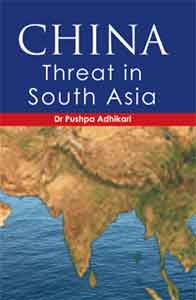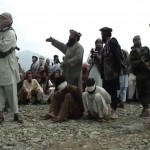“¦Qureshi said that Islamabad would welcome any role given to China to bring down tensions between India and Pakistan because of the trust and confidence it enjoyed with its close ally.
The Indian Defense Minister, A K Antony, said the Army was raising two new mountain divisions in the North-East, along borders with China, but dismissed suggestions that the move was against the neighbour. “I must tell you it is not against China, but these are being raised under the overall policies to strengthen the presence of armed forces in the North-East.”39
Addressing the China Institute of International Studies in Beijing, Pakistan Foreign Minister Shah Mahmoud Qureshi said that Islamabad would welcome any role given to China to bring down tensions between India and Pakistan because of the trust and confidence it enjoyed with its close ally.
“It is for the Indians to decide if they would be comfortable to have China talking to a third party to bridge the gap. As far as Pakistan is concerned they (China) have a blank cheque.”40
Reacting to Qureshi’s comments, a Chinese foreign ministry spokesman said India and Pakistan are both important friendly neighbours of China. He said China supports and welcomes the improvement in relations between India and Pakistan and backs efforts to settle their outstanding issues through dialogue.41
Ma stated, “China is conscious about Indias sensitivities when it deals with Pakistan. This visit (Qureshis) is important because of the security situation in Pakistan, which has become more serious after US president Barack Obama decided to send more troops to Afghanistan.
Qureshi also said that China played “a positive role” in defusing Indo-Pakistan tensions in the aftermath of the Mumbai attacks.42
According to a Chinese scholar, known for his proximity to the Chinese Foreign Ministry told the visiting Pakistan Foreign Minister Shah Mahmoud Qureshi that it wants to avoid action like investing in ‘Pakistan-occupied Kashmir’ (PoK) which might hamper the proposed India-Pakistan peace talks.43
Ma Jaili, senior researcher at the state-run Institute of Contemporary International Relations, told TOI “China does not want to invest in PoK. Chinese government knows Kashmir is a sensitive issue and a disputed area.”44
Ma also stated, “China is conscious about India’s sensitivities when it deals with Pakistan. This visit (Qureshi’s) is important because of the security situation in Pakistan, which has become more serious after US president Barack Obama decided to send more troops to Afghanistan.
“China will consider supporting Pakistan by offering to train more military and para-military forces and extend financial aid. But it would do nothing to cause unease in New Delhi.”45
According to an Indian commentator, ‘It’s time for Indians to recognize Chindia for what it is – a chimera, a Greek mythological creature compounded of incongruous parts – and adjust our strategic vision. India and China are unlikely to become cooperative partners, except in a limited opportunistic sense, any time in the foreseeable future.
China does not want to take any chance of letting any other country coming on its way of declared policy of “˜peaceful rise.
‘They have historically commercial and cultural competitors in Asia. Today they not only champion radically different systems of governance, they have too many points of friction between them in the region for anyone to imagine their melding into an economic and strategic whole in the fashion of, say, Europe, or the larger West.’46
Conclusion
From a rag-tag economy in the 50’s to a second largest economy of the world today, China has established herself as an indispensable country in the global theatre.
The economic success has given China, confidence, to continue with the age-old tactics of ‘two steps forward and one step back’. The success has also made China more ambitious in the region too.
China does not want to take any chance of letting any other country coming on its way of declared policy of ‘peaceful rise’. The country is seen to have taken the policy to consolidate her position in the volatile and weak countries of the region; not to give any opportunity to be challenged by stronger countries specially India in the future.
Both India and China have been engaged in the war of words in the past few years but whether the two giants in Asia will find something in common to ward off the looming presence of the United States”¦
In an effort to build stronger linkages with South Asian countries, China has emerged as a major supplier of military hardware and technology to smaller and volatile South Asian countries like Pakistan, Sri Lanka, Bangladesh and Burma. It has sent chill wave to India as the country has to be more careful that China in the region might encircle it. This indulgence has been understood in terms of Beijing’s strategic vision of emerging as an Asian leader which has a direct bearing on the South Asian security and strategic environment.
With the success to eliminate Al-Quida leader Osama Bin Laden, the US would definitely like to engage at the center stage of South Asia through strategic partnership with India, which will put strain in China’s delicate relation with India.
Both India and China have been engaged in the war of words in the past few years but whether the two giants in Asia will find something in common to ward off the looming presence of the United States of America in the region in various pretexts, will depend more on the upcoming leadership in both the countries; in China after 2012 and in India after 2014.
 On the other hand whether China becomes a threat in South Asia or becomes a very good friend of India to develop the region will largely depend on the commonsense of the leadership of both the countries. If the dual policy adopted by the United States; sometimes joining hands with India against China and sometimes joining China against India, is understood by the leaders of the region, then rise of Asia together under the leadership of ‘Chindia’ is inevitable. But commonsense is so uncommon and hence the threat.
On the other hand whether China becomes a threat in South Asia or becomes a very good friend of India to develop the region will largely depend on the commonsense of the leadership of both the countries. If the dual policy adopted by the United States; sometimes joining hands with India against China and sometimes joining China against India, is understood by the leaders of the region, then rise of Asia together under the leadership of ‘Chindia’ is inevitable. But commonsense is so uncommon and hence the threat.
Notes
- Chidananda Rajghatta, “PM: Not like China, we want GDP with values”, Times of India, 25 November 2009.
- Ibid.
- Ram Kumar Kamat, “Sino-Pak nexus worries India”, Himalayan Times, 28 November 2009.
- Saibal Dasgupta, “Ramesh dismisses talk of US-China ‘side deal’”, Times of India, 30 November 2009.
- News item, “Leh road halted after China objects”, Times of India, 1 December 2009.
- News item, “Chinese airstrips along LAC not a concern: Govt”, Times of India, 2 December 2009.
- Ibid.
- Sachin Parashar, “Coming, Chinese teams for CBMs” (sic), Times of India, 2 December 2009.
- Ibid.
- Ibid.
- Sachin Parashar, “Baruah has set up base in China: Home ministry”, Times of India, 13 December 2009.
- Nilovar Roy Chaudhury, “India, China to ‘harmonise’ developing country positions”, Himalayan Times, 17 December 2009.
- News item, “New-found bonhomie will see Krishna head to China”, Times of India, 24 December 2009.
- Rajat Pandit, “Army reworks war doctrine for Pak, China”, Times of India, 31 December 2009.
- Ibid.
- News item, “Stapled Chinese visas grounded”, Times of India, 2 January 2010.
- Ibid.
- Brahma Chellaney, “Asia’s changing power dynamics”, Himalayan Times, 7 January 2010.
- Ashis Ray, “UK stand on McMahon Line bolstering Beijing’s claims”, Times of India, 10 January 2010.
- Ibid.
- News item, “India has lost substantial amount of land to China”, Times of India, 11 January 2010.
- News item, “No info on detained Indians from China”, Times of India, 16 January 2010.
- News item, “Beijing pledges for Chinese engineers”, Times of India, 16 January 2010.
- News item, “China denies hackers attacked Indian govt”, Himalayan Times, 20 January 2010.
- Saibal Dasgupta, “China eyes military bases in Pakistan”, Times of India, 30 January 2010.
- News item, “Arunachal call for boycott of Chinese goods”, Times of India, 4 February 2010.
- Chidanand Rajghatta, “US sees bigger role for India in global affairs”, Times of India, 4 February 2010.
- Ibid.
- Ibid.
- Editorial, “Sixes And Sevens”, Times of India, 5 February 2010.
- Kanti Bajpai, “Stumbling Tiger, Leaping Dragon”, Times of India, 6 February 2010.
- Rajat Pandit, “Don’t see cop role in Indian Ocean”, Times of India, 7 February 2010.
- Ibid.
- Rajat Pandit, “Andaman outpost to counter China”, Times of India, 7 February 2010.
- Rajat Pandit, “Missile, jets & a strategic message”, Times of India, 9 February 2010.
- Sachin Parashar, “No link between Fonseka arrest and run for prez: Lanka envoy”, Times of India, 11 February 2010.
- Ibid.
- Rajat Pandit, “N-tipped Agni-V can hit all of China, Pakistan”, Times of India 12 February 2010.
- News item, “N-E defence build-up not against China”, Times of India, 16 February 2010.
- News item, “China gets role to cool Indo-Pak ties”, Kathmandu Post, 24 February 2010.
- Ibid.
- Ibid.
- Saibal Dasgupta, “China to avoid PoK”, Times of India, 24 February 2010.
- Ibid.
- Ibid.
- Gautam Adhikari, “A Tale of two Nations”, Times of India, 24 February 2010.




